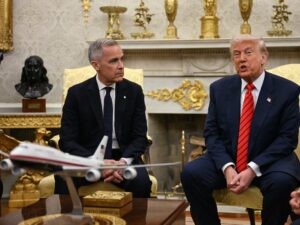
The Dalai Lama, the spiritual leader of Tibetan Buddhists, is poised to announce details regarding his succession this week as he approaches his 90th birthday. This announcement marks a significant moment for the 7.7 million followers of Tibetan Buddhism, traditionally led by a Dalai Lama chosen through a mystical process involving divine clues and symbols.
Historically, the selection of a new Dalai Lama has been a complex spiritual journey, guided by senior monks interpreting dreams, meditating at sacred sites, and consulting oracles. This process, steeped in tradition, often spans several years. However, Tenzin Gyatso, the 14th Dalai Lama, has suggested that some of these age-old rules, such as finding his successor in Tibet or selecting a male under six years old, may not apply this time.
As he prepares for his milestone birthday, the Dalai Lama has urged his followers to reject any successor chosen by China. He has hinted at establishing a framework for discussing the continuation of the Dalai Lama institution, even joking about the possibility of being reincarnated as a “mischievous blond woman” with an “attractive face.”
China’s Influence and the Dalai Lama’s Response
The Dalai Lama’s succession planning is heavily influenced by China’s attempts to appoint its own successor. China annexed Tibet in 1959, prompting the Dalai Lama and the Tibetan government to flee to Dharamshala, India, where they have lived in exile since. Dr. Laura Harrington, a senior lecturer in the religion department at Boston University, notes that the Dalai Lama is expected to clarify his succession plans in a recorded address, partly due to China’s interference.
In 2011, the Dalai Lama reserved the right to end the lineage, recognize a female successor, or choose a successor from outside Tibet. “They’re taking the very notion of Tibet and turning it into the whole world. It’s radical, right?” Harrington remarked.
“The Dalai Lama has been such a thorn in the side of China. He influences thought in Tibet, and Tibetans are the object of China’s wrath,” said Harrington.
The Traditional Selection Process
The traditional search for a new Dalai Lama begins with the death of his predecessor. For the 13th Dalai Lama, his mummified head reportedly turned from south to northeast, indicating the direction of the next Dalai Lama. A star-shaped fungus on his shrine also guided senior disciples to the home of Tenzin Gyatso in 1937, where the child identified items belonging to the former Dalai Lama.
Recognized as the new Dalai Lama at the age of four, Gyatso was educated by monks until he assumed full leadership in 1950. Awarded the Nobel Peace Prize in 1989, he advocates for a non-violent “Middle Way” to return to Tibet peacefully and gain autonomy for its people.
China’s Golden Urn and Global Implications
China’s plan to name its own Dalai Lama involves the “Golden Urn,” a method introduced by the Qing dynasty in 1793 to determine reincarnations through a lottery. Max Oidtmann, author of “Forging the Golden Urn,” explains that this method, revived by the Chinese Communist Party in the 1990s, symbolizes Chinese sovereignty in Tibet.
“The Chinese government implements a policy of freedom of religious belief,” stated a spokesperson from the Chinese Embassy, referencing the 2007 regulatory measures on Tibetan Buddhist reincarnations.
With 53 million Buddhists in China, the potential for political manipulation of the selection process is a concern. “It will be all names of people related to Communist party leaders,” fears one Buddhist follower.
The Dalai Lama’s Vision for the Future
Despite the challenges, the Dalai Lama remains hopeful. He predicts he will live to 113, based on a dream where he took 13 steps, and has reassured followers of his dedication to their well-being. Christian Wedemeyer, an associate professor at the University of Chicago, emphasizes the Dalai Lama’s efforts to assert his authority over the succession process.
“The Dalia Lama is setting up, and he’s making as much noise as he can to say that the Chinese have no business having anything to do with this,” Wedemeyer told The Post.
As the Dalai Lama prepares to unveil his plans, Tibetan leaders continue to resist China’s influence. “China is trying to grab this institution for its political purpose,” said Dolma Tsering Teykhang, deputy speaker of the Tibetan parliament-in-exile. “We want the incarnation of the Dalai Lama to be born not only for the survival of Tibet as a distinct culture, religion, and nation, but also for the well-being of the whole humanity.”
As prayers for the Dalai Lama’s long life echo across Southeast Asia, the world waits for his next move, which could redefine the future of Tibetan Buddhism and its leadership.





